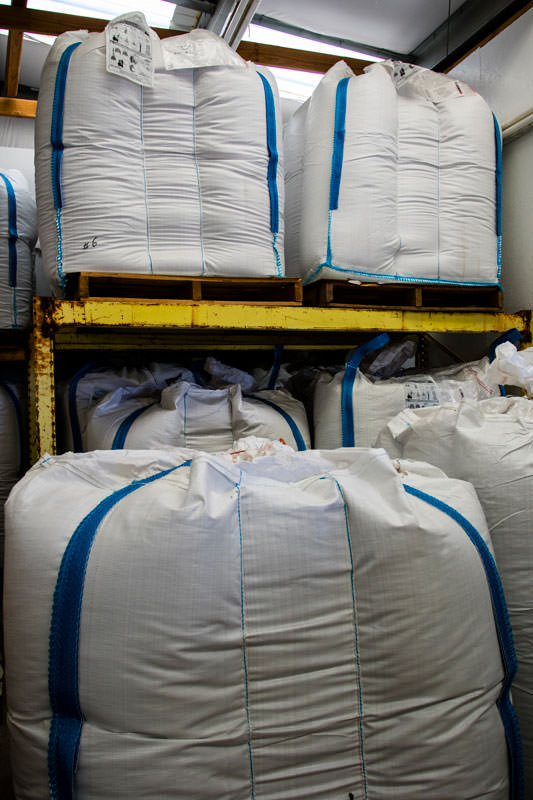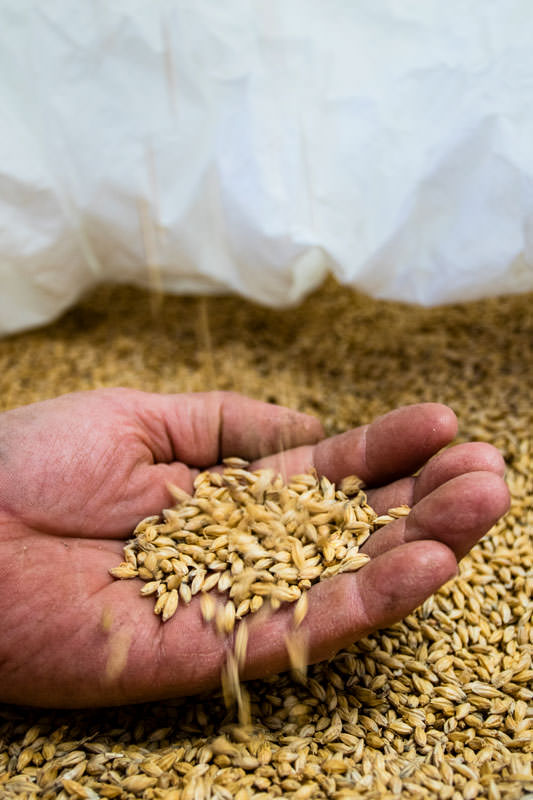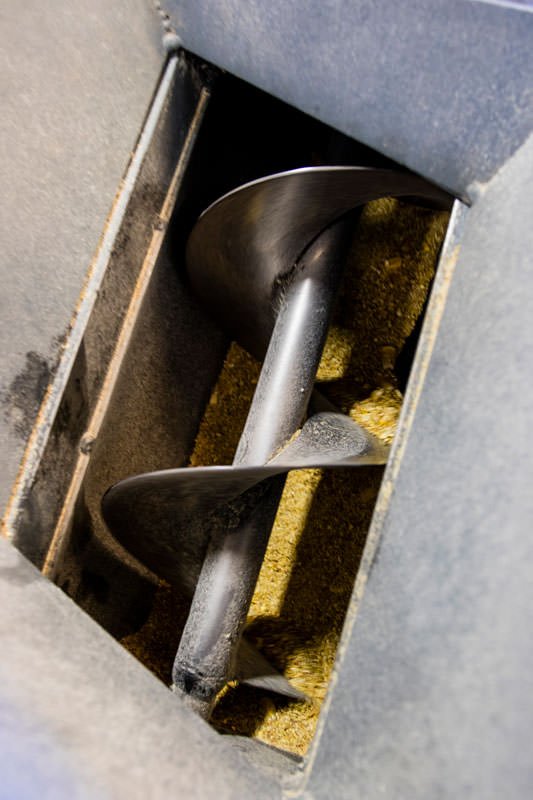MOVE OVER, HOPS
There’s a new malt in town.
Written by Claire McArthur
Photos by Ty O’Neil
There’s no denying it: Hops is the golden child of craft brewing right now. But if Fallon farmer Arney Martin had his way, those beer aficionados who are sipping hop-heavy IPAs would understand that the true hero of craft beer is a grain that can be found everywhere from bulk bins at health food stores to livestock troughs — the nutty, versatile barley.
Martin’s family has been farming in Fallon since 1954, typically growing alfalfa, but in 2017, noticing the ever-growing number of craft breweries in Northern Nevada, he decided to try something new.
“Traditionally barley was grown in Fallon, and then the market dried up when the mill closed down,” Martin explains. “There hasn’t been barley grown in Fallon probably for the last 20 years.”

2,000-pound sacks of finished malted barley
A business takes root
With 35 years of experience as a fabricator — including crafting a malting system for Frey Ranch Estate Distillery in Fallon in 2014 — Martin decided to go into the malted barley business.
“The craft brewers don’t have locally grown, handcrafted malt to make their beer,” Martin says. “You have huge farms growing thousands of acres and malting thousands of tons. Craft malt basically disappeared, and that’s where I saw the potential.”
Martin plants between 20 and 30 acres of barley every year, with a yield of 40 to 60 tons of barley.
“Most barley for brewing is grown dryland, which means you have to wait for the rain to fall, but in Fallon, we can flood irrigate, so we can irrigate when the barley wants to be watered, and we also have an almost perfect climate for it,” he explains.

Freshly harvested barley grown at 40 Mile Malt
After the grain is harvested, it goes into storage for a month to prepare it for the malting process using a setup that Martin designed and built himself.
“Similar systems were used in the late 1800s,” he says. “I can have more control and make a better product, but it’s smaller scale than what the industrial producers use.”
Over the course of the eight-day malting process, the grain is soaked in water until the bud of the root appears on the seed. Then it’s put in a drum to be blown with moist, warm air and rotated to prevent clumping.
“We are creating the perfect environment for the seed to grow,” he says. “These happy little seeds are growing and maturing, and that’s where the magic happens.”

Arney Martin stands beside the steeping vessel he built
Crafting flavor
As the rootlets emerge, the seed converts its starches into sugar, which, if left to continue growing, would fuel the seeds’ growth into a plant. The sugar is what ferments into alcohol, so at this point, Martin blows air and heat on the seed to kill it and prevent it from consuming its own sugars.
“Something that most people don’t realize is that the malt is almost like roasting coffee, so the process of adding heat, this is where you can actually create the flavor of the beer,” he says. “Depending on how hot you get it, how long you heat it, that’s where the fun comes in.”
Under the name 40 Mile Malt, Martin is working to connect with local brewers. His first partnership with Nevada’s oldest brewery, Great Basin Brewing Co., resulted in the 40 Mile IPA.

40 Mile Malt’s new field begins sprouting with 30 acres of triticale
The name not only reflects Fallon’s location along the Carson River, where exhausted travelers stopped after crossing the 40 Mile Desert, one of the toughest stretches along the Emigrant Trail, but it also represents the venture that he and his wife, Leslie, have undertaken to bring barley back to Fallon and start a new business.

Arney Martin surveys the triticale sprouting on a new field at 40 Mile Malt
“I’m one of the only producing craft maltsters in Nevada and maybe one of three on the West Coast. It’s a major risk that we’re taking,” Martin says. “People don’t talk about terroir with malt and beer like they do wine because it’s been forgotten. I hope that changes.”
– Claire McArthur is a freelance writer, sour beer lover, and reluctant home-brewing assistant to her husband.


